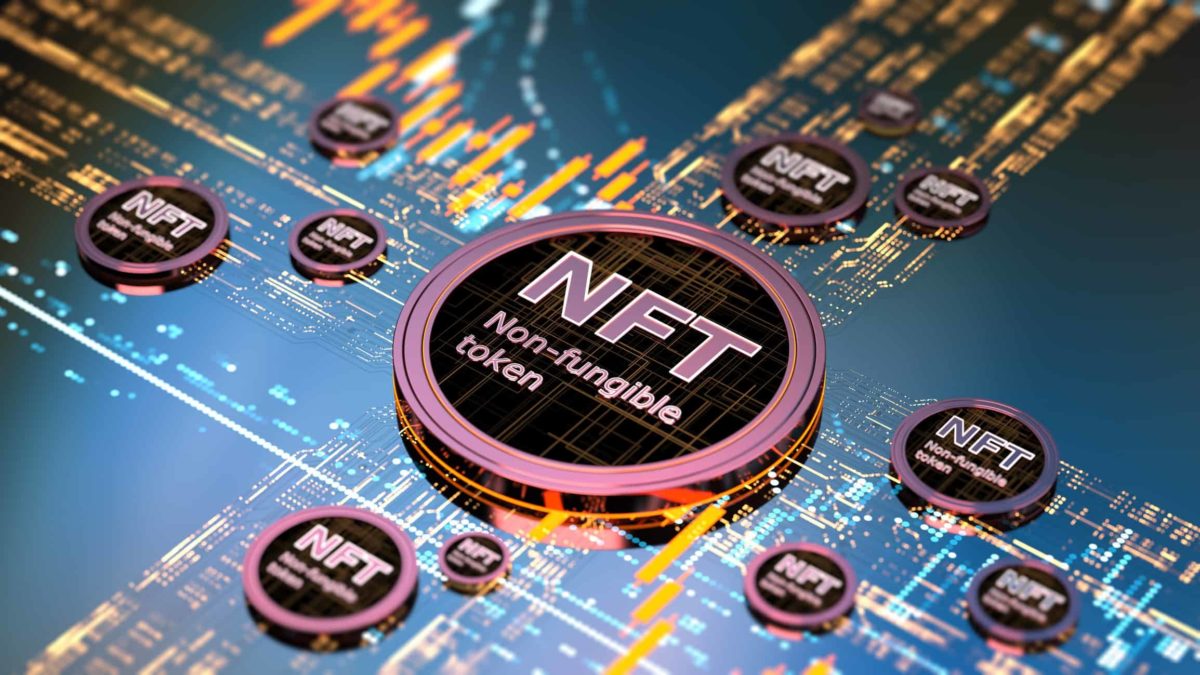"Cryptocurrency in 2025: Trends That Will Redefine Digital Assets"
Cryptocurrency has progressed significantly since the launch of Bitcoin in 2009. What began as an experiment in decentralization has grown into a trillion-dollar industry reshaping how we think about money, investments, and the global economy. By 2025, the digital asset landscape is set to evolve further, driven by technological advancements, regulatory frameworks, and increasing adoption across industries. This article explores the trends that will redefine cryptocurrency by 2025 and their implications for businesses, investors, and everyday users.
1. The Rise of Central Bank Digital Currencies (CBDCs)
One of the most significant advancements in cryptocurrency by 2025 will be the widespread adoption of Central Bank Digital Currencies (CBDCs). These are digital versions of fiat currencies issued and regulated by central banks.
Why CBDCs Are Important
- Financial Inclusion: CBDCs can provide banking services to unbanked populations, especially in developing nations.
- Efficiency: Transactions become faster, cheaper, and more secure compared to traditional banking systems.
- Government Control: CBDCs allow governments to maintain control over monetary policy in an increasingly digital economy.
China is leading this movement with its digital yuan, while other countries like the U.S. and the EU are actively exploring their own CBDC projects. By 2025, it is expected that most nations will have launched or tested their CBDCs, fundamentally changing how money circulates globally.
2. The Growth of Decentralized Finance (DeFi)
Decentralized Finance (DeFi) has revolutionized the financial sector by eliminating intermediaries like banks and enabling peer-to-peer transactions through smart contracts. By 2025, DeFi is set to grow further, driven by:
- Enhanced Security: Advances in blockchain technology will make DeFi platforms more secure and reliable.
- Interoperability: Cross-chain solutions will allow seamless interaction between different blockchain networks, improving user experience.
- Institutional Adoption: Financial institutions are already exploring DeFi platforms for lending, borrowing, and yield farming.
With DeFi, users can access financial services such as loans, insurance, and investments without relying on traditional banks, democratizing wealth creation.
3. The Integration of Artificial Intelligence and Blockchain
The convergence of artificial intelligence (AI) and blockchain technology will redefine cryptocurrencies by 2025. AI can enhance blockchain’s functionality in several ways:
- Fraud Detection: AI algorithms can identify suspicious transactions and improve security in real time.
- Smart Contracts: AI-powered smart contracts will become more adaptive and efficient.
- Data Management: Combining AI with blockchain will simplify managing and analyzing massive amounts of data stored on decentralized ledgers.
For instance, AI could optimize crypto trading strategies by analyzing market trends and predicting price movements more accurately than human traders.
4. Regulatory Clarity and Global Standards
Regulatory uncertainty has been one of the biggest barriers to cryptocurrency adoption. By 2025, governments worldwide are expected to establish clearer rules governing digital assets.
Anticipated Changes
- Tax Regulations: Governments will implement standardized tax policies for crypto transactions.
- Anti-Money Laundering (AML) Policies: Stricter compliance measures will help prevent illegal activities.
- Consumer Protection: Regulatory bodies will enforce guidelines to protect investors from fraud and market manipulation.
While regulations may initially seem restrictive, they will ultimately create a safer and more stable environment for cryptocurrency adoption.
5. Green Cryptocurrency Initiatives
As environmental concerns grow, the crypto industry is under increasing pressure to reduce its carbon footprint. By 2025, eco-friendly cryptocurrencies and sustainable blockchain practices will dominate the market.
Key Developments
- Proof-of-Stake (PoS): More blockchains will transition from energy-intensive Proof-of-Work (PoW) systems to PoS mechanisms, as Ethereum has done with Ethereum 2.0.
- Carbon Offsetting: Projects like Cardano and Algorand are focusing on being carbon-neutral or even carbon-negative.
- Energy Innovations: Solar-powered mining rigs and renewable energy sources will become mainstream.
Sustainability will emerge as a key factor influencing investor decisions and public perception of cryptocurrencies.
6. Expansion of Non-Fungible Tokens (NFTs)
Non-Fungible Tokens (NFTs) have gained massive popularity in art, gaming, and entertainment. By 2025, their applications will expand into new domains:
- Real Estate: NFTs could represent ownership of physical properties, enabling fractional ownership and easier transfer of assets.
- Identity Verification: NFTs might be used for secure digital identities, replacing traditional methods like passwords and IDs.
- Gaming and Metaverse: As virtual worlds grow, NFTs will play a vital role in defining ownership and value within these ecosystems.
NFTs will evolve from collectibles into practical tools with real-world applications, enhancing their value and utility.
7. Cryptocurrency in E-Commerce
The adoption of cryptocurrency in e-commerce is expected to soar by 2025. Major retailers are already accepting Bitcoin and other digital currencies, and this trend will continue.
Why E-Commerce Embraces Crypto
- Lower Transaction Fees: Crypto payments reduce costs for businesses by eliminating intermediaries.
- Global Reach: Cryptocurrencies enable seamless cross-border transactions, making them ideal for international trade.
- Consumer Demand: Younger, tech-savvy consumers prefer crypto payments for their convenience and privacy.
Platforms like Shopify and PayPal have already integrated crypto payments, and more companies are likely to follow suit.
8. Institutional Investment and Adoption
Institutional interest in cryptocurrency has surged in recent years, and by 2025, this trend will reach new heights. Hedge funds, pension funds, and corporations will continue to diversify their portfolios with digital assets.
Drivers of Institutional Adoption
- Inflation Hedge: Cryptocurrencies like Bitcoin are increasingly seen as "digital gold."
- Portfolio Diversification: Digital assets offer unique risk-reward profiles that complement traditional investments.
- Infrastructure Development: Improved custody solutions and regulatory clarity will make it easier for institutions to invest in crypto.
The entry of institutional players will add legitimacy and stability to the cryptocurrency market.
9. Privacy Coins and Enhanced Security
Privacy coins like Monero and Zcash focus on anonymous transactions, a feature that will become more valuable as surveillance technologies grow. By 2025, we can expect:
- Enhanced Privacy Protocols: Innovations that protect user anonymity without compromising security.
- Regulatory Balancing: Striking a balance between privacy and compliance with government regulations.
- User Adoption: Increased demand for privacy in financial transactions will drive the adoption of privacy coins.
Privacy will become a key differentiator for cryptocurrencies as concerns about data security and surveillance intensify.
10. The Role of Cryptocurrencies in Emerging Markets
Emerging markets will play a pivotal role in cryptocurrency adoption by 2025. Countries in Africa, Asia, and Latin America are already leveraging digital currencies for:
- Remittances: Cryptocurrencies provide a cheaper and faster alternative to traditional remittance channels.
- Financial Inclusion: Digital wallets and mobile-based crypto solutions are providing banking services to the unbanked.
- Inflation Hedge: In economies with unstable currencies, cryptocurrencies act as a store of value.
Emerging markets will become hubs for innovation and adoption, driving the next wave of cryptocurrency growth.
Conclusion
The cryptocurrency landscape in 2025 will be vastly different from what we see today. Trends such as the rise of CBDCs, the growth of DeFi, regulatory clarity, and advancements in technology will shape the future of digital assets. While challenges like regulatory hurdles and environmental concerns remain, the potential for cryptocurrencies to revolutionize industries and empower individuals is undeniable.
As we move forward, staying informed and adaptable will be crucial for businesses, investors, and users looking to thrive in the ever-evolving world of cryptocurrency. Whether through innovative technologies, sustainable practices, or increased global collaboration, 2025 promises to be a transformative year for digital assets.





